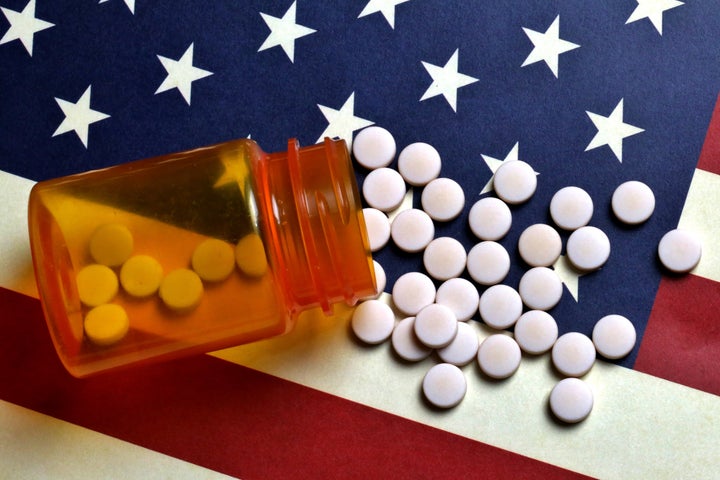
On Monday the Trump Commission on Combating Drug Addiction and the Opioid Crisis issued their interim report. Their first recommendation was to urge the president to declare a national emergency under either the Public Health Service Act or the Stafford Act. The report goes on to recommend five additional immediate steps to combat the epidemic with the promise of a fuller report and additional strategies to be released this fall.
My initial reaction was to think, it’s about time!
My second was to wonder, “What took them so long?”
And my third thought was, “How did we get to this place?”
The report paints a compelling picture of an epidemic that started to unfold over a decade ago and grew throughout the early 2000s because of overprescribing of prescription drugs, which were heavily marketed by pharmaceutical companies as non-addictive treatment for chronic pain. By the time doctors, patients, and the government began to realize the issues with prescription meds, opioid misuse was already widespread and people were turning to drugs such as heroin, because it was cheaper and easier to obtain.
“The epidemic grew throughout the early 2000s, because of the overprescribing of prescription drugs which were heavily marketed as non-addictive.”
Today, drug overdoses have become the leading cause of death among Americans under 50, with two-thirds of those deaths attributable to opioids. In 2016, 62,000 Americans died from overdoses, 19 percent more than 2015. While NYC’s overdose rate is lower than other regions, in 2016, NYC lost an estimated 1,300 people ( three to four per day) to drug overdose. An estimated 80 percent of those overdose deaths — approximately 1,075 — involved an opioid.
Since 2011, heroin and subsequently, fentanyl — a powerful synthetic opioid 50 to 100 times stronger than the painkiller morphine — have driven the increase in overdose deaths. Almost 90 percent of the fatal opioid overdoses in NYC involved heroin and fentanyl. Eighteen percent involved prescription opioid painkillers. Before 2015, fentanyl was involved in fewer than five percent of all overdose deaths in NYC. In 2016, fentanyl was involved in approximately half of NYC overdose deaths.
Though I work in Manhattan, I live in the borough of Staten Island. Staten Island, like thousands of other communities across the nation has been fighting this opioid epidemic for almost 10 years. No one has to tell us that this epidemic has reached emergency proportions. For years now the local paper which has shone a spotlight on the epidemic from all angles has been full of reports of overdoses as well as the community, City, and State response. The recommendations in the Trump Commission’s report that relate to increasing treatment capacity, prescriber education, expansion of medication assisted treatment and widespread dispensing of the overdose reversing drug naloxone are already underway in Staten Island and throughout New York City.
“Addiction is a symptom of despair and a sign that something is really going wrong in our country.”
In fact, the de Blasio administration recently launched a comprehensive, multifaceted initiative called HealingNYC: Preventing Overdoses, Saving Lives, to address the rising epidemic of deaths from opioid drug overdoses. The initiative, which will ramp up evidence-based efforts already underway, will spend $38 million annually with the goal of reducing opioid overdose deaths by 35 percent over five years. The initiative has four overarching goals: 1) preventing overdose deaths; 2) preventing opioid misuse and addiction; 3) protecting New Yorkers through effective drug treatment; and 4) protecting New Yorkers by reducing the supply of dangerous opioids. HealingNYC will build on a record of leadership and innovation by expanding what we know works and implementing 12 separate strategies that in addition to preventing opioid misuse, expanding treatment and reversing overdoses will expand efforts to reduce the availability of illegal opioids, particularly those involving fentanyl to support our ultimate goal of saving lives and reducing overdoses.
So, how did we get to this place? For more than 100 years, death rates have been dropping in the United States, but because of opioid overdoses and the rise in other deaths of despair such as suicides and alcohol-related deaths, the trend is reversing. More federal dollars are needed to implement what we know works on a scale to successfully stem the current epidemic, but how do we prevent future ones? How do we prevent the next generation of addicts? More and more addiction experts are pointing to the many social, environmental, and psychological issues that contribute to drug use. Addiction is a symptom of despair and a sign that something is really going wrong in our country. We need to get to the root cause and address the underlying issues. We owe that to the thousands who have died and the families that loved them.